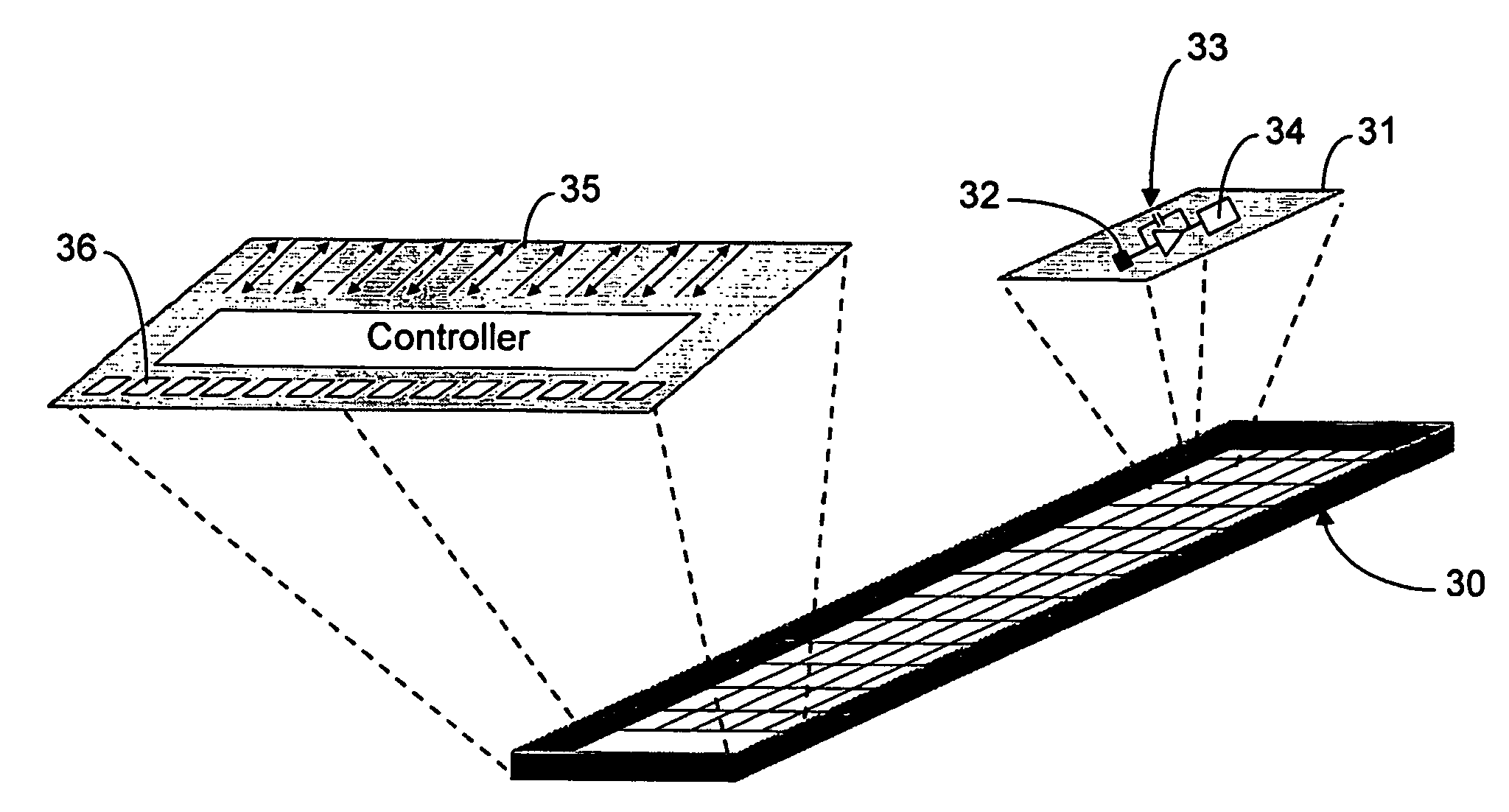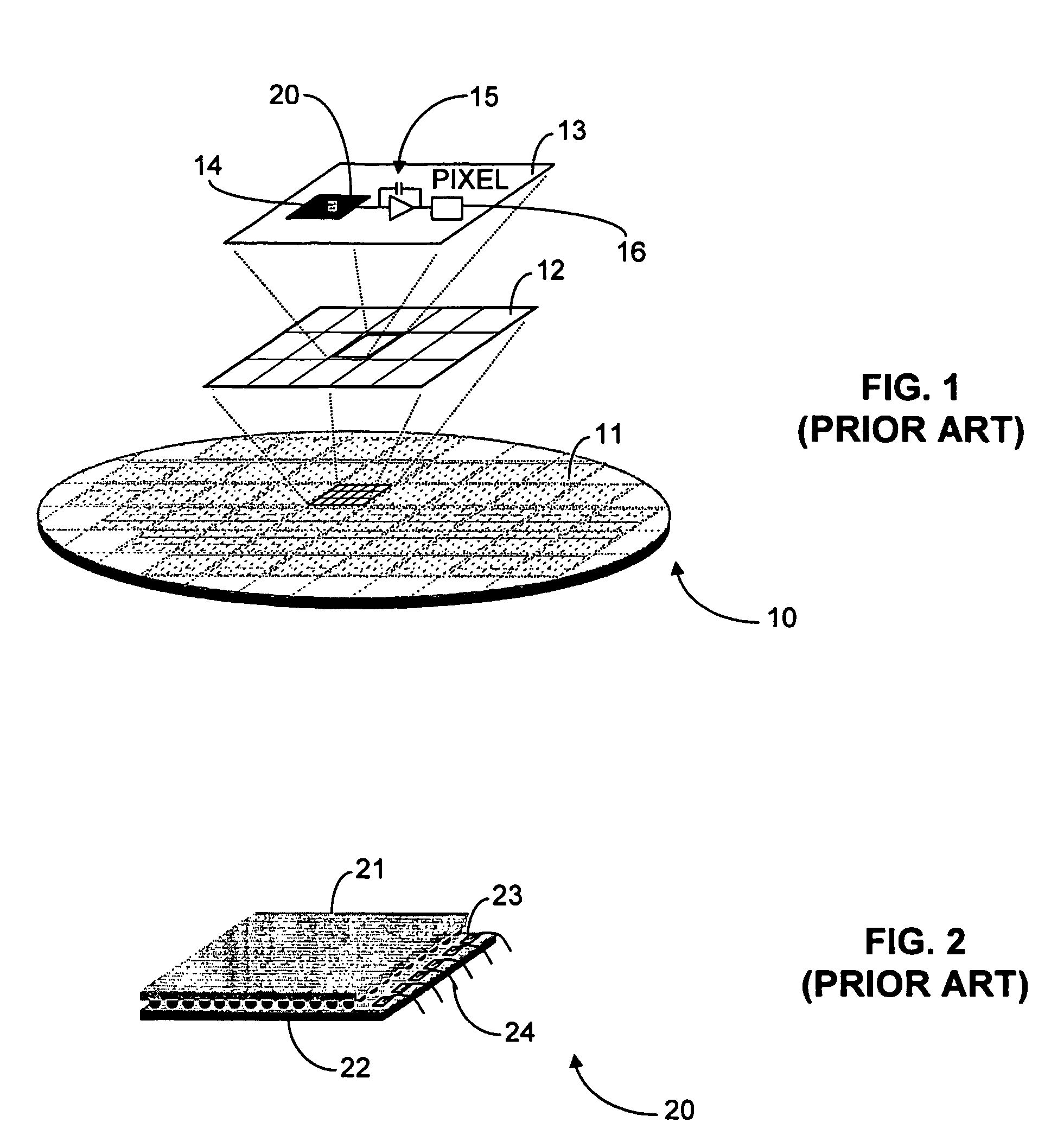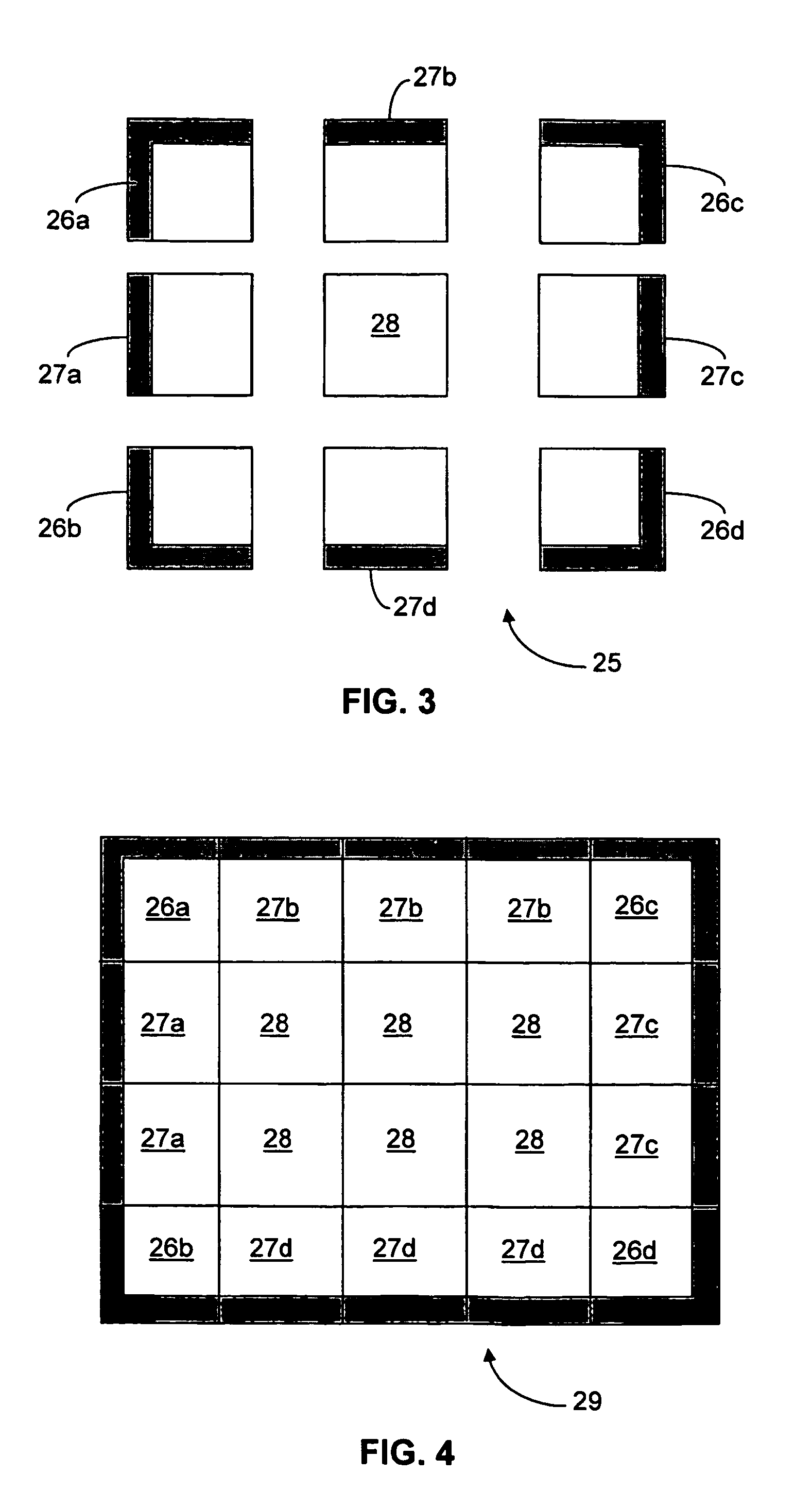Pixel detector and method of manufacture and assembly thereof
a technology of pixel detector and detector body, which is applied in the direction of x/gamma/cosmic radiation measurement, instruments, radioation controlled devices, etc., can solve the problems of low yield, difficult to increase the resolution of the sensor, and conventional silicon diodes are not suitable for such applications, so as to avoid the effect of dead space in the central region
- Summary
- Abstract
- Description
- Claims
- Application Information
AI Technical Summary
Benefits of technology
Problems solved by technology
Method used
Image
Examples
Embodiment Construction
[0040]The present invention is based on the fabrication of different architectures on a single CMOS wafer using “stitching”. To this end, it will aid in appreciating the inventive concept of the present invention if a brief introduction to stitching is presented even though the technique is not novel per se. On the other hand, a sensor array manufactured according to the invention is visibly distinguished from hitherto known sensor arrays on account of the stitching and it is therefore important that the distinction be appreciated.
[0041]In the fabrication of CMOS circuits, thin wafers are sliced from bulk pure silicon. Each thin wafer may have a diameter of approximately 30 cm (12″) and from this single wafer multiple integrated circuits (ICs) are produced using known lithographic techniques. Commonly a large number of identical ICs are fabricated from a single wafer and, to this end, artwork masks corresponding to the desired IC circuitry are imaged at spaced apart intervals to for...
PUM
 Login to View More
Login to View More Abstract
Description
Claims
Application Information
 Login to View More
Login to View More - R&D
- Intellectual Property
- Life Sciences
- Materials
- Tech Scout
- Unparalleled Data Quality
- Higher Quality Content
- 60% Fewer Hallucinations
Browse by: Latest US Patents, China's latest patents, Technical Efficacy Thesaurus, Application Domain, Technology Topic, Popular Technical Reports.
© 2025 PatSnap. All rights reserved.Legal|Privacy policy|Modern Slavery Act Transparency Statement|Sitemap|About US| Contact US: help@patsnap.com



